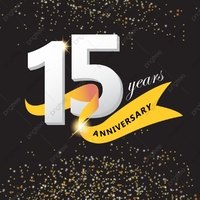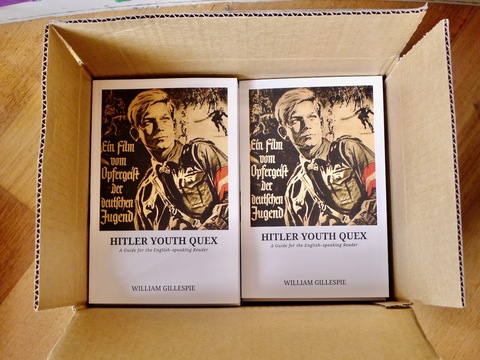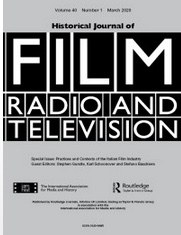- Home
- POSTER GALLERY
- ❗️BOOK & POSTER STORE❗️
- PURCHASE "HJ Quex" film ephemera HQ
- About the Posters
- The William Gillespie Collection
- Our Publishing House
- ❗️GFDN interviews author and collector William Gillespie ❗️
- Our most expensive & inexpensive finds!
- ❗️***NEW!**❗️POSTER OF THE MONTH - Blutzeugen / Raza
- ❗️NEW ❗️Film Posters – Demands on an important means of film advertising. ❗️
- In our Book + Zeitschrift Library
- ❗️ ***NEW!*** Hitler Youth Quex – A Guide for the English–speaking Reader ***NEW!*** ❗️
- ❗️***NEW!*** Table of Contents of our new HJ QUEX book❗️
- ❗️Hitler Youth Quex Guide - early praise! ❗️
- Recent loans from the Collection
- Farewell Horst Claus. (1940–2024 †)
- "Der Deutsche Film" Zeitschrift
- ❗️ ***NEW!***Reichsfilmkammer collection ❗️
- German "Tendency" Films (Tendenzfilme) in the Third Reich
- KARL RITTER
- Karl Ritter original film posers in this Collection
- "Besatzung Dora" ( † 1943)
- "The Making of The Crew of the Dora"
- Karl Ritter at the 1938 Reichsfilmkammer Congress
- INDEX -"Karl Ritter" book, 2nd edition
- Karl Ritter's Legion Condor (1939, unfinished)
- Excerpt from our "Dora" book
- ∆∆∆∆∆ High praise for our DORA book! ∆∆∆∆∆
- TABLE OF CONTENTS – "Legion Condor"
- § § § § § Early Praise for our LEGION CONDOR book! § § § § §
- ❗️"Das Leben geht weiter" and Karl Ritter ❗️
- Dateline: Ufa - April 11, 1945
- Zarah Leander Europe–wide !
- Japan Military Film and Karl Ritter
- Karl Ritter after 1945
- 1935 Film Congress
- Poster Exhibition in Berlin, March 1939
- Potsdam poster exhibition 12 April–25 August 2019
- Leni Riefenstahl's two "Olympia" Films (1938)
- "Ohm Krüger" (1941)
- Emil Jannings
- "Blutendes Deutschland" (1933)
- Hannes Stelzer ( † 1944)
- Klaus Detlef Sierck ( † 1944)
- Film stills
- Reich Film Censorship Offices
- ❗️***NEW!***The Fate of the German Film Industry in May 1945 ❗️
- Film censorship cards
- Film Archives
- Cinema advertising
- School filmstrips
- ❗️UPDATED❗️ Z F O / Ostland Film G-m-b-H
- Z F O / Herbert Jacobi estate
- ZFO / Ostland Film newspaper articles
- ❗️***NEW!*** Roter Nebel / Red Fog / Red Mist (1942/1943, ZFO) ❗️
- ZFO - Der Rückkehrer - The Returnee (1943/1944)
- The D F G production company
- D I F U
- ❗️ ***NEW!*** "Carl Peters" – Special Collection. ❗️
- "Alcazar" (1940, Genina)
- "Der 5. Juni" (1943, banned)
- Herbert Selpin and his "Titanic" (1943)
- Ein Robinson (1940, Fanck)
- "Fronttheater" (1942)
- Veit Harlan's Jud Süß and Fritz Hippler's Der Ewige Jude
- Harlan "Jud Süß" trial 1949
- Werner Krauss & JUD SÜß
- Anti-Semitic Film Posters in the Collection
- "Heimkehr" (1941)
- "Hitlerjunge Quex" (1933)
- ❗️***NEW!*** Hitlerjunge Quex in 111 Greater Berlin Cinemas ❗️
- Jürgen Ohlsen
- "S.A.Mann Brand" (1933)
- "In der roten Hölle" (Edgar Neville, 1939)
- "Helden in Spanien" (1938)
- The Spanish Civil War in Film
- Andrews Engelmann (1901 – 1992)
- Deutsche Wochenschau
- Uƒa Feldpost
- Uƒa Kulturfilm – Informationen
- " Die Tochter des Samurai" (1937, Fanck)
- Ufa 25th Anniversary
- Invitations to world premieres
- ❗️***NEW!*** Continental Films, Paris 1940–1944 ❗️
- Film Censorship in Occupied Paris 1942
- "Der Sieg des Glaubens" (1933)
- Wilhelm Althaus Estate
- Weimar Germany posters
- Ufa and the Ordensburgen
- The Gaufilmstelle in our Collection
- "Zwei Welten" (1940)
- "Capriccio" (1938) –Karl Ritter film album
- Unrealised NS Propaganda Films 1934–1945
- German Film Directors accused of "war crimes"
- Australian––themed NS feature films
- "Der Störenfried" / "The Troublemaker"
- What was new in 2014?
- What was new in 2015?
- What was new in 2016?
- What was new in 2017?
- What was new in 2018?
- What was new in 2019?
- What was new in 2020?
- What was new in 2021?
- What was new in 2022?
- What was new in 2023 ?
- What's new in 2024?
- ❗️***NEW!*** Hitler assassination attempt in Karl Ritter film cut❗️
- BESATZUNG DORA private photos
- Just discovered 1942 article on BESATZUNG DORA
- The Karl Ritter Tetralogy
- Google Analytics 2023
- Our first–ever acquisition!
- ❤️"Some of our favourite things....!"❤️
- ERRATUM for our " Hitler Youth Quex Guide"
- Trending
- Vale †
- Our Wants List / 2024 / Wunschliste
- Pop Quiz
- Unsere KARL RITTER Bücher in Deutschland liefbar!
- WHERE to buy our books right now?
- ✉️Contact
 “History is not about the facts. It is about the context and who is telling the story.” —Prof. Milton Fine.
“History is not about the facts. It is about the context and who is telling the story.” —Prof. Milton Fine.
"Who controls the past controls the future: who controls the present controls the past." –– George Orwell in his novel "1984."
"Whoever doubts the exclusive guilt of Germany for the Second World War destroys the foundation of post–war politics." –– Prof. Theodor Eschenberg, Rector, the University of Tübingen.
"If we have our own why in life, we shall get along with almost any how." – Friedrich Nietzsche
POSTER GALLERY --view
over 500 German film
original posters between
1927–1954 from
Germany and from
many Axis and Neutral countries
across Europe!
Note! Posters in the Poster Gallery are PERMANENT
acquisitions which are NOT FOR SALE!! ONLY the
posters listed in our POSTER STORE are for sale.
(They have a price and order button to use.)
" Every Father, every Mother must see this film, to feel what is happening in the soul of your child. " - Duisburger General-Anzeiger, Oktober 20, 1933
We are proud to announce here our latest German Films Dot Net book in our continuing series on German film man Karl Ritter:
 Hitler Youth Quex, the story of a fifteen-year-old working-class boy who defied his father to join the Hitlerjugend in 1932 and died a martyr, was a best-selling novel that became a box office hit when it was released as a motion picture by the famous Ufa film studio in September 1933. It was the first feature film in history devoted to those under the age of twenty, and critics worldwide came to the film’s premieres in Munich and Berlin. Adolf Hitler attended both gala premieres. The film’s song became the anthem of the HJ, and over eleven million youngsters saw the film in the Third Reich. Hitlerjunge Quex became the cult film of the new German youth.
Hitler Youth Quex, the story of a fifteen-year-old working-class boy who defied his father to join the Hitlerjugend in 1932 and died a martyr, was a best-selling novel that became a box office hit when it was released as a motion picture by the famous Ufa film studio in September 1933. It was the first feature film in history devoted to those under the age of twenty, and critics worldwide came to the film’s premieres in Munich and Berlin. Adolf Hitler attended both gala premieres. The film’s song became the anthem of the HJ, and over eleven million youngsters saw the film in the Third Reich. Hitlerjunge Quex became the cult film of the new German youth.
This Guide provides a wealth of information about the film – from the evolution of the story as a novel to its newspaper serialization to the silver screen. The fascinating careers of the critical men involved – the book’s author Klaus Schenzinger, the film’s producer Karl Ritter, and the film’s director Hans Steinhoff –are presented. The pivotal role of the Reich Youth Leader Baldur von Schirach is explored, with additional commentary from his oldest son, Klaus. The unpublished diaries of Karl Ritter found in Argentina provide new insight into the film's production. A chapter on Jürgen Ohlsen, who played the title role, offers information heretofore overlooked. All of the comprehensive Ufa studio marketing and publicity materials are translated into English for the first time. The movie's success before 1945, not just in German cinemas but in Europe, North America, and Japan between 1934 and 1944, is documented with rare advertising and reviews. The fate of the film post–WWII and how it is dealt with in today’s Germany is examined. Post-war critical analysis is also surveyed. Author is William Gillespie.
389 + -x- pages, 63 B&W photos/illustrations, 4 colour plates. AVAILABLE to Australian residents via our Poster Store listing.
Note: We have received the stock of books from the printer's. ORDER NOW!

The price is AUD$49.95 / €32 to Australian postal addresses. Orders from other countries please see BELOW:
International ordering
Book orders outside of Australia must be via International Historic Films in Chicago, USA. Their website is linked here. Their new 2022/23 print catalogue has this advertisement for the book:

IHF is also offering a COMBO of the book plus their DVD of the film at a savings of US$10.00.
February 2024 update:
The prestigious academic journal The Historical Journal of Film, Radio & Television reviewed the book and summarised it as follows:
[T]he greatest merit of Gillespie’s book is that he not only brings together many sources that are – if at all – difficult to access, but also that he makes them accessible to an English-speaking audience.
 Hitler Youth Quex: A Guide for the English-speaking Reader’s unique selling point … is the way it presents and discusses a range of different primary sources and embeds them in the historical context.
Hitler Youth Quex: A Guide for the English-speaking Reader’s unique selling point … is the way it presents and discusses a range of different primary sources and embeds them in the historical context.
"Gillespie's book is a treasure trove for scholars of history, film history and propaganda more generally. This includes graduate and postgraduate students, early career researchers and more established academics. As such it is recommended for the essential classroom reading lists on any course dealing with film propaganda." - The Historical Journal of Film, Radio & Television, 2024.
Likewise, a review is anticipated in Germany's ranking film journal, Filmblatt (CineGraph, Hamburg) later this northern Spring.
Back in Berlin......
Our roving reporter found the old Gemeinde Schule 1999-2005 shown in the film when Heini comes out his trade school and takes a handbill from HJ Fritz Dörries and then is invited to come to the Dörries home for dinner, where he meets Fritz's charming sister, BDM girl Ulla.
The school as shown in the film:

The school today, under renovation, located on Levetzowstraße, corner of Gotzkowskystraße, in Alt–Moabit. Gotzkowskzstraße and its bridge over the Spress River is where Red Leader Stoppel tells Heini to report for the anti-HJ attack being planned. That bridge today looks like this.

BELOW: A 1939 contemporary book illustration form a Third Reich children's book, depicting the assault on Herbert Norkus by Communist thugs; which was the basis of the novel Hitlerjunge Quex by Schenzinger.


